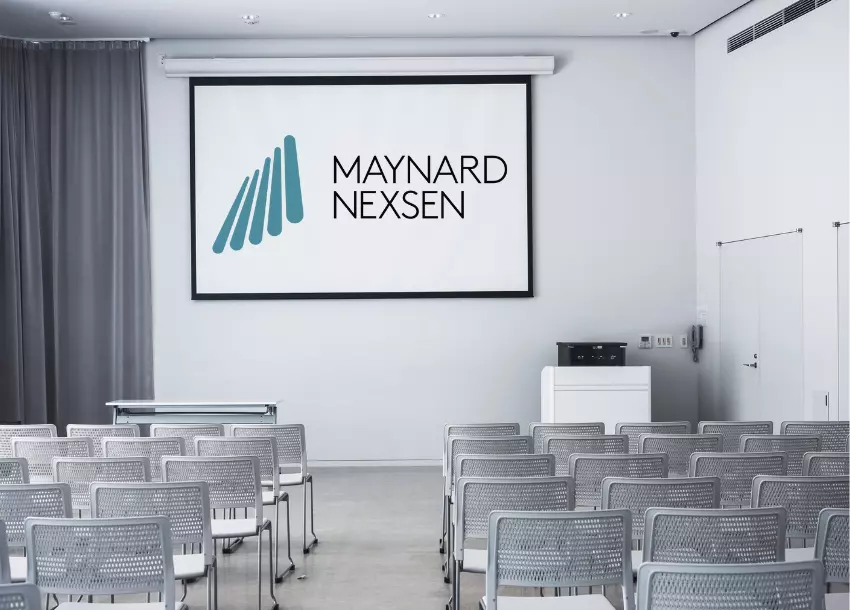GAO Decision Highlights Agency’s Evaluation of Mentor-Protégé Joint Venture, But Could Unintentionally Lead Industry Astray on SBA’s Workshare Rule
View other recent posts form our Government Solutions Group on their blog, Discussions and Clarifications.
A recent Government Accountability Office (“GAO”) decision highlights the Small Business Administration’s (“SBA”) regulations relating to agency evaluations of a mentor-protégé joint venture’s past performance and experience, including under the SBA’s joint venture workshare rule.
This decision demonstrates the ways that agencies continue to adapt their evaluation practices to comply with SBA’s complex regulatory regime for joint ventures. Contractors should be aware, however, that the SBA’s joint venture workshare requirements are not as onerous as a quick read of the decision might suggest.
This article is broken into three parts. The first part provides an overview of the solicitation that gave rise to the decision. The second part discusses a portion of GAO’s decision. And, the third part shows why a casual reader could potentially interpret the decision as standing for the proposition that SBA’s joint venture workshare rule is more onerous than the regulation requires.
Part I
The protest of Tygrove Technologies, RLLP, B-422448, June 24, 2024, 2024 CPD ¶ involved a task order for information technology services under GSA’s STARS III governmentwide contract. The protest principally focused on the solicitation’s most important non-price factor—the “past performance, experience, and team structure” factor, which was part of the phase one evaluation scheme.
Under phase one, the solicitation required that offerors submit “information for two to seven ‘similar/relevant contracts or task orders substantially performed within the last five years by the business unit of the prime contractor (or Joint Venture, or predecessor[] Joint Venture or component of the proposing Joint Venture) that will perform the associated work on this task order.’”
The solicitation also said offerors would be evaluated for currency and relevance of past performance and experience. Relevance meant “as relating the examples ‘to the required tasks as well as to the work planned to be performed by each team entity,” in addition to evaluating the ‘suitability’ of the team structure to the requirements.”
Finally, the solicitation said the agency would evaluate offerors consistent with 13 C.F.R. § 125.8(e). And, offerors were required to submit a “general narrative describing, for example, the structure and organization of the offeror’s proposed team,” and were also able to “provide an additional page depicting the team organization chart.”
The agency received 28 proposals, including from Tygrove, a mentor-protégé joint venture, and rated the company as “marginal” with “high risk” for phase one. As a result, the agency “recommend[ed] that Tygrove Technologies not be further considered to progress to evaluation [in p]hase 2.”
Part II
Relevant here, Tygrove submitted seven past performance and experience examples, including “two from Inserso, the large business mentor and incumbent; two from Potomac Haven, the 8(a) small business protégé and managing member; one from Tygrove, the joint venture itself; and two from [REDACTED], a subcontractor.” Tygrove also submitted a narrative and team organizational chart.
In evaluating Tygrove, the agency concluded that its proposal was marginal and had a high risk, “identifying three strengths, three weaknesses, and two risks.”
For the first risk, the agency noted that the protester “‘did not provide compelling or applicable examples . . . to demonstrate that it (and not just Inserso) can perform this work successfully’ and this ‘presents a significant risk for contractor performance.’” The agency also concluded that “‘only Inserso has demonstrated the capability to perform this work successfully’ and that ‘Potomac Haven did not demonstrate the ability to assume 40 [percent] of this work (as required by SBA JV regulations).’”
For the second risk, the agency noted that “there is very low blending within tasks which conveys low value placed on collaboration and new idea exchange both within the task and overall.” The agency also determined that the mentor Inserso would perform “the predominance of the work on each task area,” with the protégé Potomac Haven performing a small percentage of the effort.
GAO held that the agency’s evaluation was unobjectionable and ultimately concluded that the protester has “not established that the agency’s evaluation was unreasonable or violated applicable procurement law and regulation.”
Specifically, GAO found that in evaluating joint ventures, SBA’s rules require agencies to consider work done and qualifications held by each member of the joint venture, notwithstanding the fact that the joint venture partners must demonstrate in the aggregate that they have the experience and past performance necessary to perform the contract. 13 C.F.R. § 125.8(e). With regard to workshare, GAO highlighted SBA’s joint venture regulation that states “the small business partner to the joint venture must perform at least 40% of the work performed by the joint venture.” 13 C.F.R. § 125.8(c).
GAO explained, “the question was whether the agency was permitted under 13 C.F.R. § 125.8(e) to consider the 40 percent workshare requirement under 13 C.F.R. § 125.8(c) in evaluating its proposal.” GAO answered in the affirmative.
In arriving at that conclusion, GAO discussed prior cases involving the degree of consideration an agency must give to each joint venture members’ experience under SBA’s rules. GAO concluded that, consistent with its decisions, no specific degree of consideration is mandated and that “[i]n the absence of more specific requirements or prohibitions in SBA’s regulations, it was not unreasonable for GSA [. . .] to take into account the reality of the 40 percent workshare that a small business protégé in a joint venture will be expected to meet.”
Thus, under SBA’s regulations, GAO concluded that “Tygrove’s proposed past performance, relevant experience, and team structure--with performance by its small business protégé proposed for only a small percentage of the work--logically raised concerns for the agency[.]”
GAO’s analysis, however, did not end there; the tribunal also requested input from SBA.
In its comments, SBA stated that “[b]ecause neither the Small Business Act nor SBA regulations mandate a specific degree of consideration for each member [of a joint venture], an agency may apply reasonable evaluation or responsibility criteria to the protégé managing venturer to ensure that it has the necessary experience and capacity to perform the work, as long as such criteria are not the same as those required of other offerors generally.”
SBA further explained that an agency “may require a protégé firm to demonstrate some past performance and experience” and that “requirement is reasonable to ensure the protégé can meet its required 40 percent performance of work requirement.” [FN1]
In light of SBA’s comments and the tribunal’s prior precedent, GAO determined that there is no specific degree of consideration an agency must give when evaluating the experience of each member of a joint venture. GAO therefore concluded that consideration of the 40 percent workshare requirement was not prohibited – and that an agency may “logical[ly] consider[] the risk and reality that a small business protégé would be expected to perform 40 percent of the workshare for a joint venture.”
Part III
While GAO’s decision showcases how a procuring agency evaluated a mentor-protégé joint venture’s past performance and experience under SBA’s framework, it is also notable because a quick read of the decision might confuse contractors about the amount of workshare a protégé is required to meet – and be evaluated on.
The decision’s characterization of the agency’s evaluation, GAO’s analysis, and SBA’s insights is broad and warrants highlighting. Take the following excerpts:
-
The agency noted that “[protégé] Potomac Haven did not demonstrate the ability to assume 40 [percent] of this work (as required by SBA JV regulations).” (emphasis added.)
-
The agency stated (in another part of the decision) that “[t]he TET and GSA acquisition team considered whether Tygrove might be planning to grow Potomac Haven’s role to meet the 40 [percent] requirement over the course of the period of performance. The evaluators found no evidence of such a plan in [Tygrove’s proposal for phase 1]. The TET found that the [past performance/relevant experience] examples provided do not demonstrate that Potomac Haven could scale up to 40 [percent] nor does Tygrove’s proposal make any mention at all of whether or how it would accomplish this, which suggests there is no plan to offer Potomac Haven any substantive experience at all.” (emphasis added.)
-
GAO, in phrasing the issue, said “[w]here the parties disagree focuses on GSA’s evaluation of risk in Tygrove’s proposal--including the TET’s noted concern that “Potomac Haven did not demonstrate the ability to assume 40 [percent] of this work (as required by SBA JV regulations).” (emphasis added.)
-
GAO said that “[i]n the absence of more specific requirements or prohibitions in SBA’s regulations, it was not unreasonable for GSA, in exercising its discretion to evaluate the past performance, relevant experience, and team structure factor, to take into account the reality of the 40 percent workshare that a small business protégé in a joint venture will be expected to meet.” (emphasis added.)
-
SBA stated that “[n]othing in the terms of the Solicitation or GSA’s evaluation criteria appears to violate the requirements of [13 C.F.R.] § 125.8(e). An agency may require a protégé firm to demonstrate some past performance and experience. Such a requirement is reasonable to ensure the protégé can meet its required 40 percent performance of work requirement.” (emphasis added.)
A reasonable interpretation of these statements is that that all three agencies are in harmony that SBA’s joint venture regulations require the protégé to perform 40 percent of the solicited work. That is not, however, exactly correct. Instead, SBA’s workshare rule is tied to the work the small or protégé member of the joint venture performs, as between the joint venture members.
As noted above, SBA’s workshare requirement states that the small business partner (protégé or the small socio-economic partner under related rules) “must perform at least 40% of the work performed by the joint venture.” 13 C.F.R. § 125.8(c)(1) (emphasis supplied). That “performed by the joint venture” qualifier is echoed in another subsection, which states that “[t]he work done by the small business protégé partner must be at least 40% of the total done by the partners [of the JV].” 13 C.F.R. § 125.8(c)(3).
SBA’s regulations therefore tie the 40 percent workshare rule to the work the joint venture members perform, which may not cover the work for the entire procurement where subcontractors are involved. Indeed, as SBA’s regulations also provide, a joint venture, as the prime offeror, also "must perform the applicable percentage of work required by" the limitation on subcontracting rule. 13 C.F.R. § 125.8(c). Thus, the fact that a joint venture may use third-party subcontractors that are not members of the joint venture necessarily alters the 40 percent workshare analysis.
In that regard, the SBA’s webpage on joint ventures supplies a helpful example.
There, SBA recognizes that “[t]he protégé must perform at least 40% of the work done by the joint venture” but also clarifies that “[a]ssuming the joint venture and the protégé perform the minimum work share requirements [under the limitation on subcontracting rules], the protégé will perform 20% of the contract.” (emphasis added.) In the example, the joint venture subcontracted approximately half the work to a third party, which would be consistent with SBA’s limitation on subcontracting rule.
So, as the example demonstrates, while a small business protégé is required to perform 40 percent of the workshare as between joint venture members, the small business or protégé member’s workshare for the entire procurement could be much less than 40 percent of the solicited work where third-party subcontracting is anticipated.
Turning back to GAO’s decision, while it provides a significant analysis of SBA’s joint venture regulations and workshare rule, it is silent as to how much workshare Tygrove’s subcontractor was proposed to perform, notwithstanding that the subcontractor accounted for two of seven experience and past performance examples. As SBA’s regulations and example illustrate, the percentage of subcontracted workshare necessarily impacts the workshare calculus because the subcontractor’s portion of overall work must be left out of the equation.
In light of this reality, the characterization of SBA’s workshare rule in GAO’s decision (reflected above) leaves the decision open to interpretation that the 40 percent workshare requirement is tied to the full scope of work. The lack of clarity therefore makes it difficult to know exactly how GAO analyzed the 40 percent workshare rule in the protest. Indeed, on the face of the decision, it appears at least possible that the agency may have inadvertently included the subcontractor’s workshare in its analysis.
Of course, this is conjecture and the protégé may not have shown that it met SBA’s workshare rule. So, interpreting the decision in foregoing manner may not reflect the reality of what transpired in the protest. After all, GAO’s decision contains redactions in key places. Moreover, as a deciding tribunal, GAO necessarily enjoys editorial liberties when selecting what parts of the record and briefs to highlight in its decisions. Nevertheless, the above interpretation is worth noting given how the decision characterized the 40 percent workshare requirement and what a casual industry observer might glean from it.
Takeaway
As shown above, SBA’s regulatory landscape for joint ventures is multifaceted and complex. As procuring agencies endeavor to evaluate joint venture offerors under SBA’s rubric, one thing seems clear: an agency must consider the work performed and qualifications held by each member when evaluating the capabilities, past performance, and experience of a joint venture and that, as part of that consideration, an agency may also account for the reality that a protégé or small business member is expected to meet SBA’s 40 percent workshare rule. To that end, members of joint ventures should take this into account when writing proposals (including past performance and experience examples) in response to government solicitations.
__________
[1] – SBA also took the position that an “offeror’s ability to meet SBA’s regulatory requirements should be treated as a determination of contractor responsibility.” GAO did not rule on this issue, but this statement sheds light into SBA’s thinking, which may inevitably resurface in another protest.
About Maynard Nexsen
Maynard Nexsen is a full-service law firm of nearly 600 attorneys in 31 locations from coast to coast across the United States. Maynard Nexsen was formed in 2023 when two successful, client-centered firms combined to create a powerful national team. Maynard Nexsen’s list of clients spans a wide range of industry sectors and includes both public and private companies.









